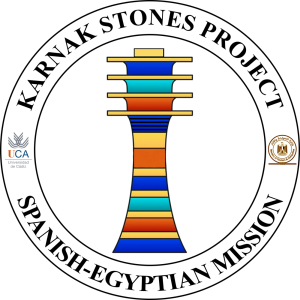When it comes to preserving ancient structures like those at Karnak, detecting hidden damage within
the stones is just as important as preserving their visible surfaces. To achieve this, we employed
ultrasonic pulse velocity (UPV) testing, a powerful non-destructive technique that allows us to assess
the internal health of the stone blocks without causing any harm to the material. The principle behind
UPV is simple but effective. Sound waves are introduced into the stone, and the speed at which these
waves travel through the material is measured. Healthy stone transmits sound waves more quickly,
while areas with cracks, voids, or other internal weaknesses slow down the wave speed. By analyzing
this data, we can pinpoint areas where the stone has begun to fracture or degrade, even if these
problems aren’t visible on the surface. The value of this testing lies in its ability to detect hidden
damage that could otherwise go unnoticed. Small fissures, internal cracks, or areas of weakness
caused by weathering or stress can compromise the structural integrity of the blocks over time.
Identifying these issues early is important for deciding which blocks need immediate stabilization to
prevent further damage and which are more structurally sound, allowing us to prioritize conservation
efforts effectively. Ultrasonic testing also helps us make informed decisions about which conservation
materials and techniques will be most effective for each block. For example, blocks with internal
damage may require more advanced stabilization treatments, such as injection of consolidants, while
those in good condition may only need surface preservation. By combining ultrasonic testing with
other conservation methods, we’re able to ensure that each block receives the appropriate care it
needs, allowing us to preserve the integrity of Karnak’s majestic stones for the long term.
